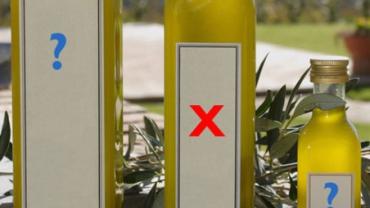
Olive oil has a bit of a unique place in nutrition science. It’s one of the few foods the disparate camps agree on: Paleos vegans vegetarians low-carbers plus most doctors dietitians and nutritionists. We’ve all got a bottle of it in the kitchen. This “green gold” has been anointed (pun intended) with the magical powers to do just about everything from protecting heart health to making salads delicious. Publicity surrounding the health benefits of a Mediterranean-style diet has caused the demand for olive oil to skyrocket even in places where it isn’t part of the traditional cuisine such as in Japan and India. While we can celebrate this growing awareness of the healthful properties of olive oil the soaring popularity is not without its downside. Olive oil fraud is rampant and there’s a chance that not only is a bottle of “extra virgin olive oil” not extra virgin but it might not even be 100% olive oil.
Due to the incredible popularity of high quality extra virgin olive oil the temptation is high for manufacturers to cut corners and fill bottles with a less-than-wholesome product. This is upsetting for any consumer but it’s especially so for healthcare professionals who may be advising their patients to avoid soy corn and canola oils in favor of olive oil. Due to the startlingly common practice of adulteration people who think they’re getting olive oil—and who may even be spending more money to get one of presumably higher quality—may actually be getting regular doses of those other vegetable oils.
The adulteration of olive oil is not a new practice. The practice of pulling one over on consumers is nearly as old as the production of olive oil itself. In modern times there are importers exporters and perhaps most disappointingly—inspectors—who are easily swayed by bribes to look the other way when bottles labeled as “extra virgin” contain just a little bit of extra virgin oil mixed with far less pure olive extractions and even “lampare”—olive oil of such poor quality the Italians use it for heating and oil lamps and wouldn't dream of eating it.
So how can one be certain the olive oil they purchase really is “the good stuff?” It’s hard to say. Price is not always a good indicator. There are economies of scale at work in the olive oil industry such that some perfectly fine (and pure) oils are available at low price points while far inferior oils and oils cut with soy corn or other oils may be sold at a premium. Consumers may believe color is a good indicator of an oil’s quality and purity but this is not necessarily the case. Because olive oil may come from many different olive varieties true extra virgin olive oils come in a spectrum ranging from straw-colored yellow to very deep green. North Americans seem to prefer the latter believing that the greener the oil the better the quality. This leads manufacturers to bottle their oil in clear plastic or glass bottles so consumers can get a good look but exposure of the fatty acids to bright supermarket lights 24/7 may not be in the best interest of preserving the integrity of these fats. Dark glass bottles and metal tins prevent this but those also prevent consumers from seeing the oil’s color.
The flavor of olive oil varies as well. It’s similar to wine in that it has a terroir. Flavors vary based on the age of the oil local weather during the growing season and of course the type of olive(s) used. Some will be mild; others will be so strong they leave a burning sensation at the back of the throat. (It’s not an absolute indicator but generally the more “bite” an olive oil has the more of the beneficial polyphenols and antioxidants it contains.) Think of olive oil not so much as a fat but as “olive juice.” That's what it really is after all. Olives are a fruit and when they’re crushed what comes out is oil. In this sense the oil should be as fresh as possible so look for containers that specify not just a “best by” date but a harvest date—the date the olives were actually picked.
It is said that “the fridge test” is a way to confirm a true olive oil. A pure olive oil should begin to solidify after being refrigerated whereas one cut with more highly polyunsaturated oils like soy and corn will not. According to olive oil experts at the University of California Davis however not all high quality olive oils will solidify so this is not a reliable indicator.
So what are healthcare professionals and health-conscious consumers to do? If we’re going out of our way to avoid certain oils and consume others how can we be sure we spend our food dollars wisely? The book Extra Virginity: the Sublime and Scandalous World of Olive Oil details the rich cultural culinary and economic history of olive oil and gives readers a look at the disturbing practice of oil adulteration and outright fraud. The author’s website Truth in Olive Oil provides tips for identifying and purchasing true extra virgin oils as well as the best ways to store them and use them in the kitchen in order to take advantage of the properties “the good stuff” is known for.